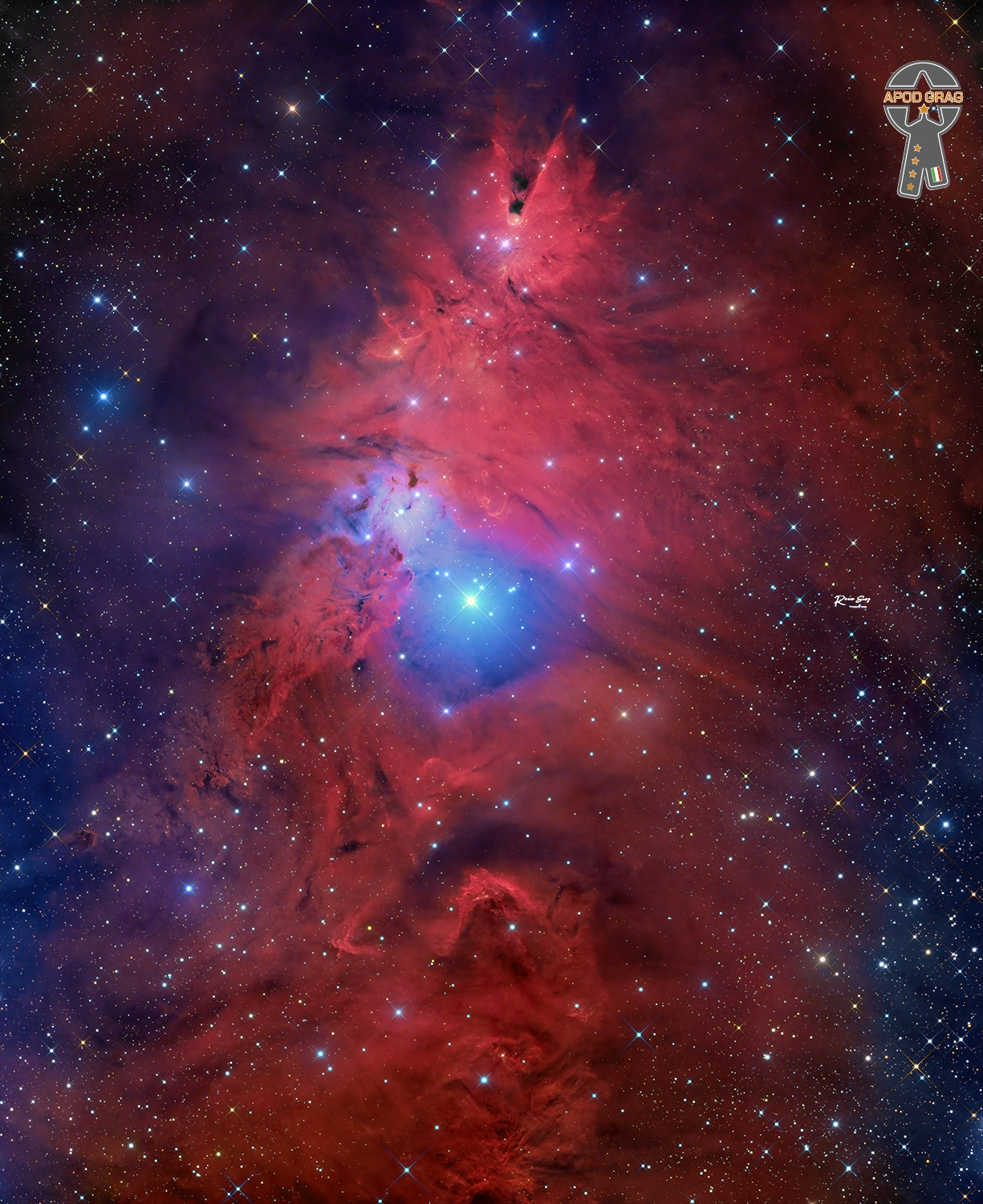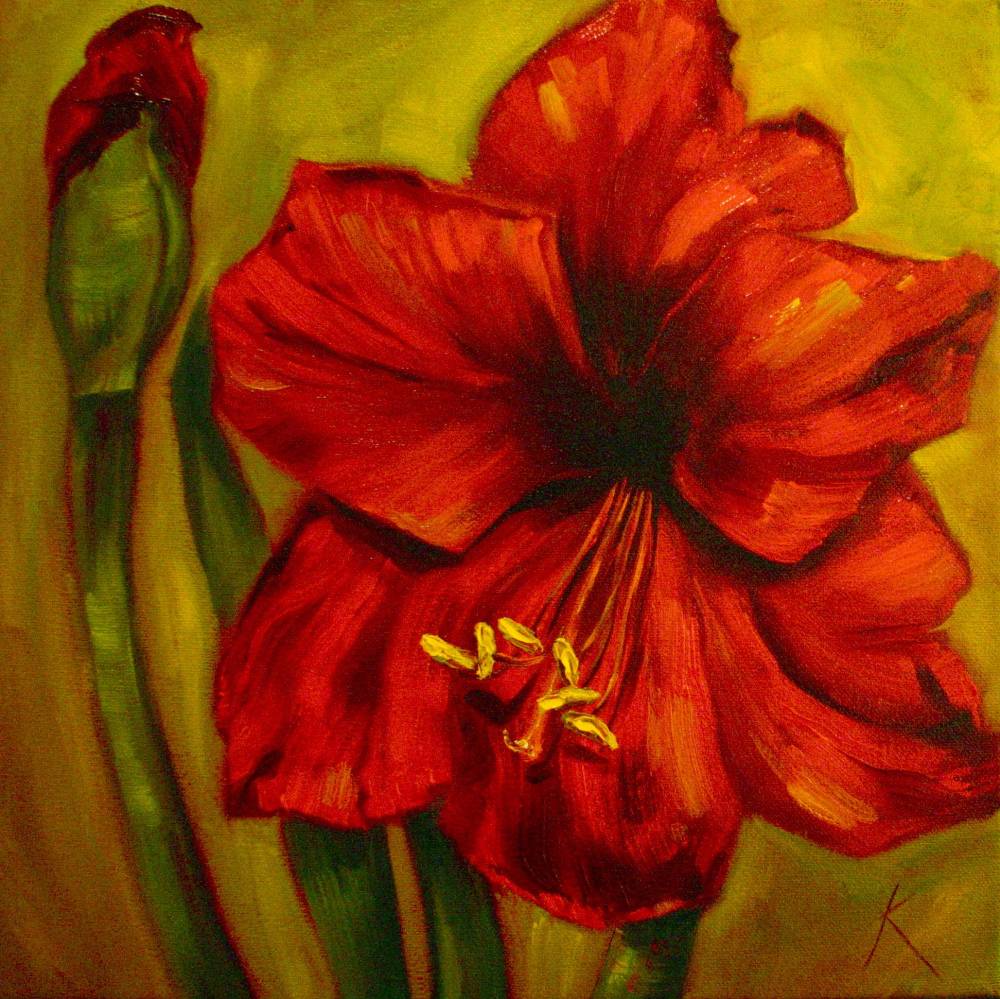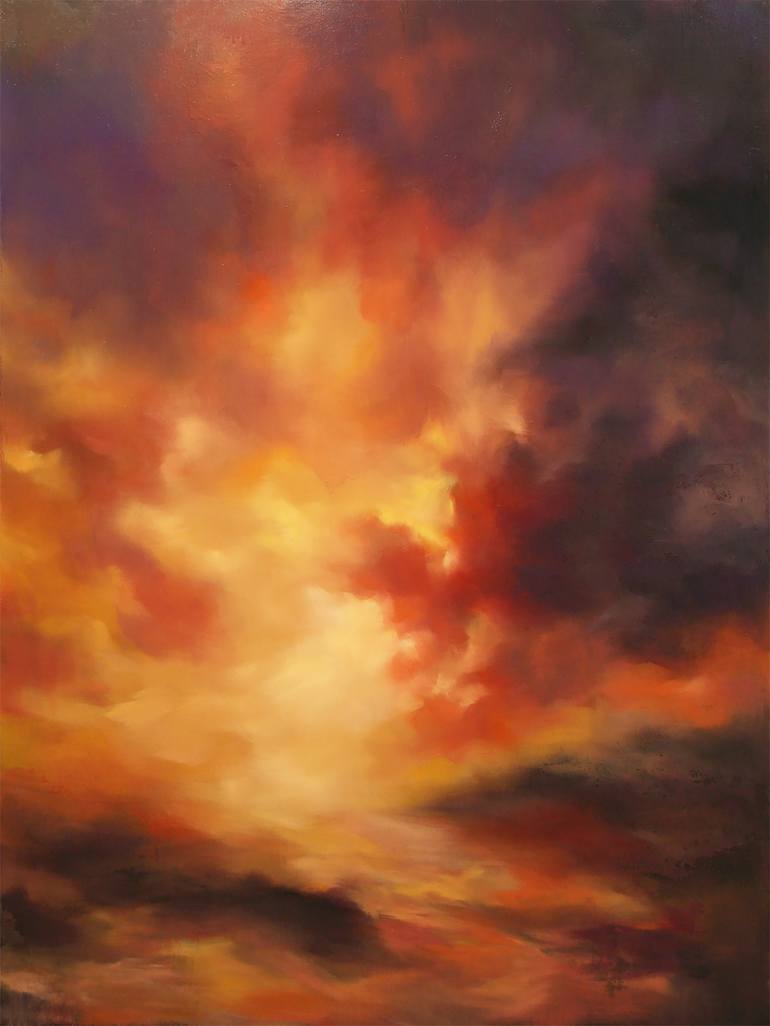Blog
NGC 2264 is the designation number of the New General Catalogue that identifies two astronomical objects as a single object: the Cone Nebula, and the Christmas Tree Cluster. Two other objects are within this designation but not officially included, the Snowflake Cluster, and the Fox Fur Nebula. All of the objects are located in the Monoceros constellation and are located about 720 parsecs or 2,300 light-yearsfrom Earth.Due to its relative proximity and large size, it is extremely well studied. NGC 2264 is sometimes referred to as the Christmas Tree Cluster and the Cone Nebula. However, the designation of NGC 2264 in the New General Catalogue refers to both objects and not the cluster alone. In December 2023, NASA released Christmas holiday-related images by the James Webb Space Telescope, including the Christmas Tree Galaxy Cluster and others.

James Robert Haslip (born December 31, 1951) is an American bass guitarist who was a founding member of the jazz fusion group the Yellowjackets, which he left in 2012. He was also an early user of the five-string electric bass. Born in the Bronx to Puerto Rican immigrants, Spanish was Haslip’s first language and he learned to speak English in kindergarten. His father, James Joseph (Jaime) Haslip (1915–1999) served in the United States Customs Service, beginning as a Merchant Marine until moving to patrolman and eventually deputy commissioner, marrying Jimmy’s mother Virginia (Viera) Haslip (1912–2009) in 1937.
more...Jonah Jones (born Robert Elliott Jones; December 31, 1909 – April 30, 2000) was a jazz trumpeter who created concise versions of jazz and swing and jazz standards that appealed to a mass audience. In the jazz community, he is known for his work with Stuff Smith. He was sometimes referred to as “King Louis II”, a reference to Louis Armstrong. Jones started playing alto saxophone at the age of 12 in the Booker T. Washington Community Center band in Louisville, Kentucky, before quickly transitioning to trumpet, where he excelled.
Jones was born in Louisville, Kentucky, United States. An early music instructor stuttered when stating Jones’ surname, and so Jones became known as ‘Jonah’. He began his career playing on a river boatnamed Island Queen, which traveled between Kentucky and Ohio. He began in the 1920s playing on Mississippi riverboats and then, in 1928, he joined with Horace Henderson.
more...John Kirby (December 31, 1908 – June 14, 1952), was an American jazz double-bassist and bandleader. In addition to sideman work (prominently with Benny Goodman), Kirby is remembered for leading a successful chamber jazz sextet in the late 1930s and early 1940s, which scored several hit songs including “Loch Lomond” and the debut recording of “Undecided“, a jazz standard. He is perhaps the first musician in the chamber jazz genre. Earlier in his career he also played trombone and tuba. Kirby was born John Kirk in Winchester, Virginia, United States, on 31 December 1908. His mother, Dolly Kirk (died October 1925) gave him up for adoption in 1908 and he was raised by Reverend Washington Johnson and his wife, Nancy, at 442 North Kent Street in Winchester. (Kirby is listed as a household member in the 1920 United States Federal Census, but not in the 1910 census.)
more...
S2-92 It is a large emission nebula visible in the constellation of the fox.
It is identified in the northern part of the constellation, on the border with the swan, on the southern edge of a very bright stretch of the Milky Way; It appears very extensive and weak, to the point that very sensitive tools are needed to be able to resume it. The best time for his observation in the evening sky goes from June to November; Its northern declination causes it to be more observable from the regions of the boreal hemisphere.
Sh2-92 is a very extensive H II region, whose diameter exceeds 200 light years; Perhaps it belongs to the outermost edge of the arm of Orion, at a distance of about 4400 parsec (14300 light years) from the Solar System. The source of the ionization of the gases of this cloud is a brilliant Wolf-rayet star, known with the abbreviation WR 127 (or HD 186943); this star, of apparent magnitude 10.18.

Patricia Lee Smith (born December 30, 1946) is an American singer, songwriter, poet, painter, and author who became an influential component of the New York City punk rock movement with her 1975 debut album Horses.
Called the “punk poet laureate”, Smith fused rock and poetry in her work. Her most widely known song, “Because the Night“, co-written with Bruce Springsteen, reached number 13 on the Billboard Hot 100 chart in 1978 and number five on the UK Singles Chart. In 2005, Smith was named a Commander of the Ordre des Arts et des Lettres by the French Ministry of Culture. In 2007, she was inducted into the Rock and Roll Hall of Fame.
In November 2010, Smith won the National Book Award for her memoir Just Kids. The book fulfilled a promise she made to her former long-time partner Robert Mapplethorpe. She is ranked 47th on Rolling Stone magazine’s 100 Greatest Artists of All Time, which was published in 2010 and was also a recipient of the 2011 Polar Music Prize.
Smith was born on December 30, 1946, at Grant Hospital in Chicago to Beverly Smith, a jazz singer turned waitress, and Grant Smith, a Honeywell machinist. The family was of part Irish ancestry and Patti was the eldest of four children, with siblings Linda, Kimberly, and Todd. When Smith was four, the family moved from Chicago to the Germantown section of Philadelphia, then to Pitman, New Jersey,and finally settled in the Woodbury Gardens section of Deptford Township, New Jersey
more...John Cowan Hartford (December 30, 1937 – June 4, 2001) was an American folk, country, and bluegrass composer and musician known for his mastery of the fiddle and banjo, as well as for his witty lyrics, unique vocal style, and extensive knowledge of Mississippi River lore. His most successful song is “Gentle on My Mind“, which won three Grammy Awards and was listed in “BMI’s Top 100 Songs of the Century”. Hartford performed with a variety of ensembles throughout his career, and is perhaps best known for his solo performances where he would interchange the guitar, banjo, and fiddle from song to song. He also invented his own shuffle tap dance move, and clogged on an amplified piece of plywood while he played and sang.
Harford (he changed his name to Hartford later in life at the behest of Chet Atkins) was born on December 30, 1937, in New York City to parents Carl and Mary Harford. He spent his childhood in St. Louis, Missouri, where he was exposed to the influence that shaped much of his career and music: the Mississippi River. From the time he got his first job on the river, at age 16, Hartford was on, around, or singing about the river.
more...Ellas Otha Bates (December 30, 1928 – June 2, 2008), known professionally as Bo Diddley, was an American guitarist and singer who played a key role in the transition from the blues to rock and roll. He influenced many artists, including Buddy Holly, Elvis Presley, the Beatles, the Rolling Stones, the Animals, George Thorogood, Syd Barrett, and the Clash.
His use of African rhythms and a signature beat, a simple five-accent hambone rhythm, is a cornerstone of hip hop, rock, and pop music. In recognition of his achievements, he was inducted into the Rock and Roll Hall of Fame in 1987, the Blues Hall of Fame in 2003, and the Rhythm and Blues Music Hall of Famein 2017. He received a Lifetime Achievement Award from the Rhythm and Blues Foundation and the Grammy Lifetime Achievement Award. Diddley is also recognized for his technical innovations, including his use of tremolo and reverb effects to enhance the sound of his distinctive rectangular-shaped guitars. Bo Diddley was born in McComb, Mississippi, as Ellas Otha Bates (also stated as Otha Ellas Bates or Elias Otha Bates).
more...Stanley William Tracey CBE (30 December 1926 – 6 December 2013) was a British jazz pianist and composer, whose most important influences were Duke Ellington and Thelonious Monk. Tracey’s best known recording is the 1965 album Jazz Suite Inspired by Dylan Thomas’s “Under Milk Wood”, which is based on the BBC radio drama Under Milk Wood, by Dylan Thomas.
The Second World War meant that Tracey had a disrupted formal education, and he became a professional musician at the age of sixteen as a member of an ENSA touring group playing the accordion, his first instrument. He joined Ralph Reader’s Gang Shows at the age of nineteen, while in the RAF and formed a brief acquaintance with the comedian Tony Hancock. Later, in the early 1950s, he worked in groups on the transatlantic liners Queen Mary and Caronia and toured the UK in 1951 with Cab Calloway. By the mid-1950s, he had also taken up the vibraphone, but later ceased playing it. At this time he worked widely with leading British modernists, including drummer Tony Crombie, clarinettist Vic Ash, the saxophonist-arranger Kenny Graham and trumpeter Dizzy Reece.
more...Friday 12-29-23 6pm Accompanying Erev Shabbat Service at Temple Israel with cantor Inbal Sharett-Singer, Tobias Moss, Jayson Rodovsky, Jeff Bailey and mick laBriola.
more...More Posts
- STOP IMMIGRANT RACISM IN AMERIKA
- Cosmos NGC 2440
- Stop the Killing in Israel and Palestine
- Merry Christmas 2023
- Dave Bartholomew
- Woody Shaw
- Ray Bryant
- Baby Dodds
- World Music Ensemble Yela
- Daily Roots Jacob Miller
- Jesus, Santa and Coke a Cola
- Cosmos MACS J0138.0-2155
- Esther Phillips
- Frank Morgan
- Chet Baker
- World Music Shir Gadasi
- Daily Roots Alton Ellis
- Jesus, Santa & Coke
- Mt Zion Shabbat for the Soul
- Cosmos NGC 4038 Group



